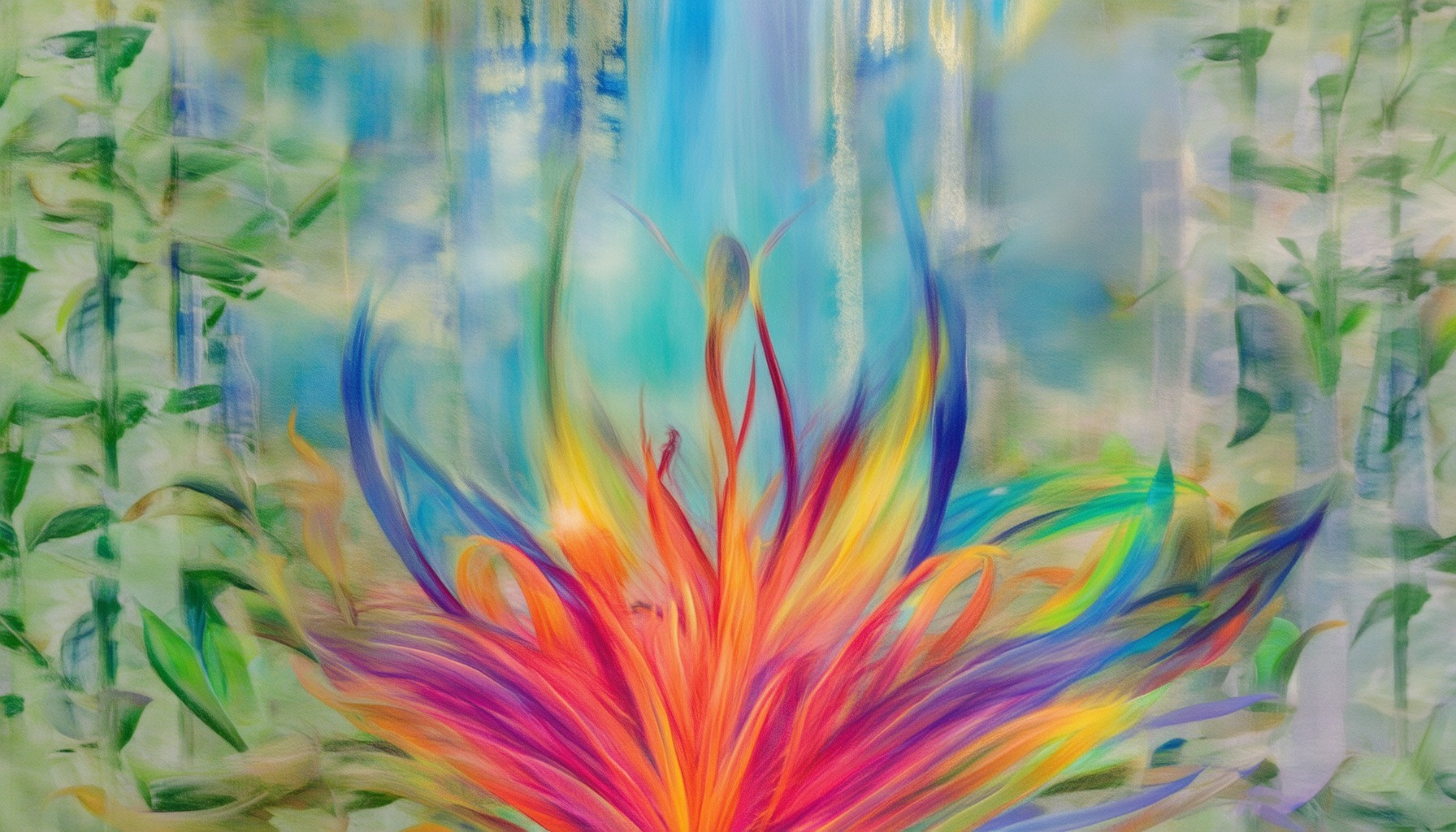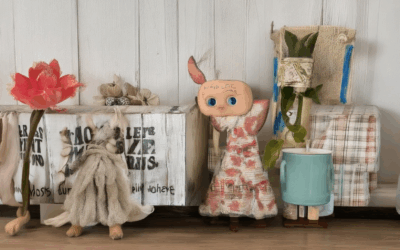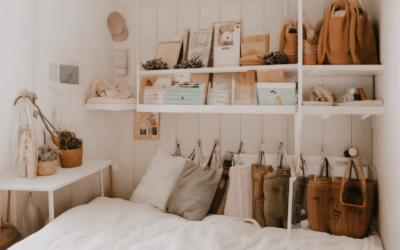Embracing a creative lifestyle is a transformative journey that opens doors to personal growth, self-expression, and a vibrant life. Whether you’re seeking inspiration, looking to refine your skills, or exploring new avenues for self-discovery, this guide offers invaluable insights and actionable tips to help you harness your creativity. From understanding the essence of a creative lifestyle to learning practical steps to integrate creativity into your daily routine, this article delves into the challenges, habits, and mindset required to thrive in a world full of possibilities. Discover how to overcome creative blocks, align your passions with your values, and build a routine that fuels your imagination. With expert advice and real-life examples, this comprehensive exploration will leave you equipped to live a life filled with creativity, purpose, and joy.

How to Live a Creative Lifestyle
Living a creative lifestyle is about embracing curiosity, exploration, and self-expression. It’s not just about being an artist or a writer—it’s a mindset that can transform every aspect of your life. Here are some practical steps to cultivate a creative lifestyle:
- Maintain a Curious Mindset
- Ask questions and explore new perspectives regularly.
- Stay curious about the world around you and your surroundings.
- Engage in conversations that challenge your thinking.
- Develop a Daily Routine
- Set aside dedicated time for creative activities, whether it’s journaling, painting, or brainstorming.
- Start your day with something creative to kickstart your imagination.
- Schedule regular breaks to allow your mind to wander and think creatively.
- Cultivate a Nurturing Environment
- Create a workspace that inspires and energizes you.
- Surround yourself with colors, textures, and objects that spark joy or inspiration.
- Keep your space organized to reduce mental clutter and foster creativity.
- Embrace Failure as a Learning Tool
- Don’t fear failure; see it as a step toward growth and innovation.
- Learn from mistakes and view them as opportunities to improve.
- Take calculated risks in both personal and professional endeavors.
- Connect with Like-Minded Individuals
- Join local art groups, workshops, or online communities.
- Collaborate with others to bring your shared vision to life.
- Learn from others’ approaches and incorporate new techniques into your own.
- Practice Gratitude and Reflection
- Reflect on what brings you joy and fulfillment in your life.
- Gratitude practices can open your eyes to new possibilities and creative ideas.
- Document your thoughts and feelings to track your personal growth.
- Stay Inspired by the World Around You
- Explore new places and expose yourself to different cultures and experiences.
- Read books, watch films, and listen to music that inspire your imagination.
- Follow inspiring individuals on social media or in your community.
- Experiment and Explore New Ideas
- Try new things and don’t worry about the outcome.
- Experiment with different creative mediums and styles.
- Be open to change and willing to adapt your approach.
- Find Balance in Your Life
- Balance creativity with responsibility and practicality.
- Set realistic goals and manage your time effectively.
- Know when to take breaks and recharge your creativity.
By embracing these practices, you can create a fulfilling and dynamic creative lifestyle that enriches your life in profound ways. Remember, creativity is a journey, and every step forward, no matter how small, is a victory.
For more tips on fostering creativity and finding inspiration, explore our Creative Mindset section and discover how to unlock your full potential.
What is a Creative Lifestyle?
A creative lifestyle is a way of living that embraces curiosity, self-expression, and uniqueness. It’s about approaching life with fresh perspectives and trying new things, regardless of traditional norms or expectations. At its core, a creative lifestyle is about engaging with the world in a meaningful and imaginative way.
Key Components of a Creative Lifestyle
- Curiosity : A creative mindset begins with asking questions and exploring the unknown. It’s about seeking inspiration in everyday moments and experiences.
- Exploration : Whether it’s traveling to new places, experimenting with new hobbies, or diving into different cultures, exploration fuels creativity.
- Experimentation : A creative lifestyle often involves trying new approaches, even if the outcome isn’t immediately clear. It’s about learning through trial and error.
- Expression : Creativity isn’t just about thinking—it’s also about communicating ideas. Whether through art, writing, music, or even cooking, expressing oneself is a vital part of a creative lifestyle.
How to Cultivate a Creative Lifestyle
- Embrace variety : Try new activities, foods, or ways of thinking regularly.
- Be open-minded : Stay receptive to change and willing to step out of your comfort zone.
- Find inspiration everywhere : Look for creative ideas in nature, people, and everyday situations.
- Set boundaries : Balance creativity with responsibility and productivity to avoid burnout.
Benefits of a Creative Lifestyle
Living a creative life can lead to personal growth, increased happiness, and a stronger sense of identity. It encourages innovation, problem-solving skills, and emotional intelligence.
Explore more creative living tips and unique ideas on our Creative Living Tips page or discover unique home decor ideas to inspire your next project.

How to Train Yourself to Be Creative
To enhance your creativity, consider implementing the following structured approach:
- Set Dedicated Creative Time : Allocate a specific block of time each day, such as immediately after waking up, to engage in creative activities like journaling or brainstorming sessions.
- Practice Mindfulness : Begin your day with mindfulness exercises, such as meditation, to reduce stress and open your mind to creative thoughts.
- Embrace Constraints : Experiment with creative constraints, such as writing a poem or painting in a specific style, to stimulate new ways of thinking.
- Create an Inspiring Environment : Designate a space filled with motivating elements like books, art supplies, and motivational quotes to spark inspiration.
- Utilize a Creative Journal : Keep a journal to document daily observations and ideas, aiding in tracking progress and identifying patterns.
- Prioritize Sleep and Rest : Ensure adequate sleep and regular rest periods to maintain cognitive function and boost creativity.
- Learn from Others : Study the techniques of renowned creators to gain insights, using their methods as a foundation for developing your own style.
- Practice Gratitude : Incorporate daily moments of appreciation to foster a positive mindset, conducive to creativity.
- Explore New Experiences : Engage in novel activities like cooking or visiting museums to gain fresh perspectives and ideas.
- Stay Curious and Open-Minded : Approach new experiences with curiosity and openness, embracing ambiguity to unlock creative potential.
- Celebrate Small Victories : Acknowledge and celebrate any creative achievements, no matter how minor, to maintain motivation.
By consistently applying these strategies, you can cultivate a more creative mindset over time, leading to greater innovation and expression.

What Are the Habits of Creative People?
Creative individuals often possess unique traits that set them apart. Their habits and mindset contribute significantly to their ability to generate innovative ideas and solutions. Below are some common habits that creative people embrace:
- Curiosity and Exploration : Creative people are naturally curious. They enjoy exploring new ideas, perspectives, and experiences, which fuels their creativity.
- Daily Creativity Practice : Many creatives dedicate time daily to engage in activities that stimulate their imagination, such as journaling, sketching, or experimenting with new techniques.
- Embracing Failure as Feedback : Creative individuals understand that failure is often a stepping stone to success. They view mistakes as opportunities to learn and grow.
- Staying Open-Minded : They remain open to diverse perspectives and are willing to consider unconventional approaches, which helps them think outside the box.
- Seeking Inspiration : Creative people actively seek inspiration from various sources, including art, nature, literature, and conversations with others.
- Time Management for Productivity : Effective time management allows them to balance their creative projects with other responsibilities, ensuring consistent progress.
- Continuous Learning : They are committed to lifelong learning, constantly expanding their knowledge and skills to stay ahead creatively.
By cultivating these habits, creative individuals can unlock their potential and consistently produce groundbreaking work.
Why Do Creative People Struggle?
Creative individuals often encounter unique challenges due to their innovative mindset and imaginative approaches. Here are the primary struggles they face:
- Self-Doubt and Fear of Failure: Many creative people grapple with self-criticism, fearing their ideas may not meet expectations or be deemed inadequate. This fear can paralyze creativity and hinder progress.
- Chasing Inspiration Over Routine: Creative routines require consistency, yet inspiration often strikes in spontaneous moments. Maintaining a balance between structured effort and unpredictable inspiration can be difficult.
- Standing Out in a Crowded World: With countless creators vying for attention, distinguishing oneself can be daunting. This pressure can lead to feelings of inadequacy or uncertainty about one’s niche.
- External Pressures and Expectations: Creative projects often come with deadlines, financial needs, and societal expectations. Balancing artistic integrity with practical demands can be a significant challenge.
Historical figures like Vincent van Gogh and Pablo Picasso illustrate these struggles, showing that creativity coexists with personal and professional hurdles. Understanding these challenges can help provide support and structures that foster growth while respecting the unique nature of creativity.

What are the 7 daily habits of highly effective people?
- 1. Morning Routine Optimization – Start your day with a focused morning routine that includes prioritized tasks and reflection to set the tone for productivity.
- 2. Continuous Learning – Dedicate time to learning and skill development through books, courses, or workshops to stay ahead in your field.
- 3. Health Prioritization – Maintain physical and mental health through regular exercise, balanced nutrition, and sufficient sleep to sustain energy levels.
- 4. Time Management Mastery – Use effective time management techniques like the Eisenhower Matrix to prioritize tasks and eliminate distractions.
- 5. Goal Setting – Set clear, achievable goals aligned with your long-term objectives and regularly review progress to stay on track.
- 6. Network Building – Actively seek opportunities to connect with others in your field to build relationships and gain insights that can drive growth.
- 7. Gratitude Practice – Cultivate a mindset of gratitude by acknowledging positive experiences and focusing on what you’re thankful for to enhance overall well-being.
These habits, when consistently practiced, can lead to significant improvements in productivity, personal growth, and overall life satisfaction.





0 Comments